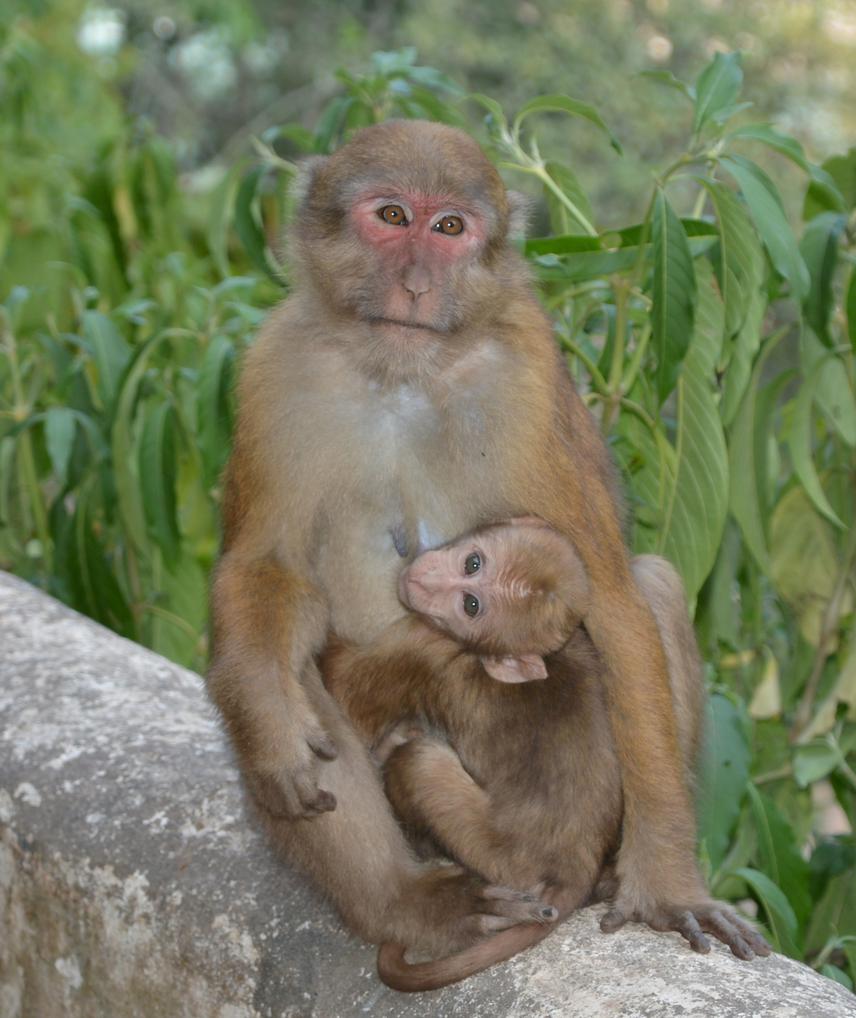Laxman Khanal
Other projects
14 Jul 2015
Sustainable Conservation of Assamese Macaque (Macaca assamensis) in the Catchment Area of Budhigandaki Hydroelectric Project, Nepal
28 Oct 2019
Exploration and Conservation of Newly Reported Endangered Assam Macaque Population in Far-Western Nepal
Assamese macaque (Macaca assamensis) population in Nepal is taxonomically enigmatic and has a disjunct distribution in forests of mid-hills mostly outside the protected area system. Due to habitat destruction and human-macaque conflicts, the population is decreasing at an alarming rate. Recently, some troops (in far western Nepal) have been reported from previously unknown global distribution ranges. Owing to few studies on the species, the level of genetic diversity and genetically unique subpopulations are not known. Therefore, an integrated approach employing fine-scale geographic survey, socioecology, and conservation genetic analysis is inevitable.

Mother and infant Assamese macaque from central Nepal.
This project will survey and sample the troops from the areas that were not covered by Khanal et al. (2018). The study areas include Kanchenjungha Conservation Area and Tamor River basin in eastern Nepal, Gaurishankar Conservation Area and Sunkoshi River basin in Central Nepal, and Bheri and Karnali River basins in western Nepal. Assamese macaques will be surveyed by a modified line-transect method and population census will be done. Then, fresh fecal samples from known individuals will be collected. DNA will be extracted from the feces and three loci from the mitochondrial DNA (CR, CYTB, and COI) will be amplified and sequencing will be done. Multiple population genetic and conservation genetic tools will be used to analyze the DNA sequence data. Additionally, awareness campaigns will be conducted involving community forest user groups in the areas of higher conflict between the Assamese macaques and humans.
Fine-scale distribution map of the Assamese macaques will be helpful to formulate conservation and management plans, especially outside the protected area network of Nepal. Genetic diversity and population genetic structure of the species will be known that will help us to know the conservation threats of the species. Population genetic and conservation genetic analyses will help us to identify genetically unique ESUs and isolated genetic MUs. This will help to emphasize conservation actions for those subpopulations. Local people will be made aware of the need for and importance of the conservation of the Assamese macaques. The mid-hills of Nepal have lower protected area representation than the lowland and higher mountains. Some forest patches in mid-hills are strongholds of threatened flora and fauna including Assamese macaques. This study will identify those areas of conservation importance and recommend government institutions formulate conservation plans.
Header: A matrilineal social group of Assamese macaque from Kaligandaki River Basin, Nepal.